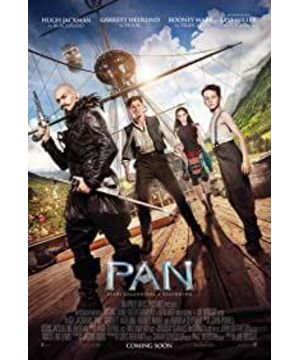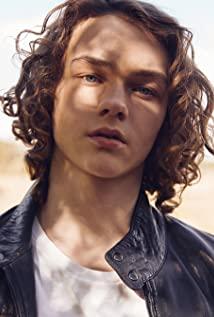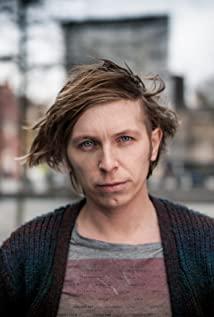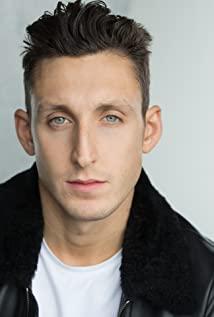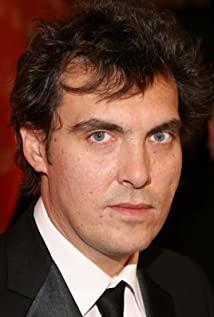Peter Pan, as a classic image of Western children's literature, comes from the novel "Peter Pan and Wendy" by Scottish writer James Barley in the early 20th century. It tells the story of a family living in the Victorian era - Mr. Darling, a bank clerk and his beautiful and virtuous wife, as well as their eldest daughter Wendy and two younger brothers. Although the family is not rich, it is beautiful and warm. Until one night, a boy who could fly took the three children of Darling's family away and flew to a dreamy island of Neverland. Here are a group of equally young boys (Lost boys) who take risks during the day and sleep in a secret tree hole at night, and they also recommend Wendy as a "mother". It's all about the beauty, magic and excitement of fairy tales - Tinker Bell, jungles and natives, mermaid lagoons, giant crocodiles in waterholes, and the eternal enemy, Captain Hook, the pirate.
Wendy, who was taken away by Peter Pan in the novel, is mainly tasked with telling stories to these little children. Children are full of enthusiasm for those exotic adventure stories. This kind of adventure-themed "bedtime stories" we have heard or seen in our childhood can make a long list of books, such as "Treasure Island", "Gulliver's Travels", "Tom Sawyer", "Ha "The Adventures of Kebain", "The Little Prince", "Niels Riding the Goose", "Twenty Thousand Leagues Under the Sea", "Robinson Crusoe" and so on. The 2004 film Finding Neverland told how Barley, the writer played by Johnny Depp, came up with the Peter Pan story after seeing children playing pirate games in a park. He blended into those familiar mythological characters and children's life and games, and constructed the dream world of "No Island".
As J.R.R. Tolkien, the author of The Lord of the Rings, put it figuratively, those well-known and enduring myths and folklore are like a "story pot" full of themes, ideas and characters. Every generation of writers has taken material from it and added material to it. Those classic and bright artistic images all reflect a broad historical and cultural background. Peter Pan, the flying child king in Pali's novel with pearl-like baby teeth, wrapped in vines and leaves, is named after the half-human, half-sheep faun Pan in Greek mythology. As a strange creature, Pan is more common in children's favorite fantasy movies with children as the protagonist, such as "Pan's Labyrinth" and "The Chronicles of Narnia". And the musical instrument pan flute is an important element in the image composition of Pan, the god of animal husbandry. In this "Peter Pan: Dreams Sail", a panpipe pendant is used as an indication of his identity and a prompt on the plot. The reason why Pan has become a common image in children's literature and art from an ancient Greek god may have some connections: this man-animal figure was originally a mixture of shepherds and sheep. Xiao, in charge of animal husbandry, has a symbol of nature. The shepherds are often children, and children are often lost in the mountains and countryside. The pan flute whimpered and disappointed, and it also had the nostalgic temperament of innocence and pure beauty. For example, in "Once Upon a Time in America", which is familiar to movie fans, the pan flute plays the theme of classic music. So Peter, who flew to take away the children in their sleep, had such a meaningful surname.
In 1953, Disney's cartoon "Peter Pan" (Peter Pan) was deeply rooted in the hearts of the people. It is in line with Disney's consistent purpose of being beautiful and innocent, and it is perhaps the most suitable Peter Pan screen work for young children to watch, and it is also the most faithful to the original at the story level. Peter Pan wore a felt hat with a feather on his head, a light green shirt with an open collar, dark green leggings, pointed shoes, and a dagger at his waist. This image reminds us easily of another British folktale hero, Robin Hood. Peter Pan, played by Jeremy Sumpter in the 2003 version of "Peter Pan" (Peter Pan), has unkempt curly hair, a leaf animal skin suit, and the uninhibited heroic spirit of a wild boy. And the actor's image is also closer to a teenager. In the film, he and Wendy have some innocent feelings. At the end of the film of this "Dream Dream", Peter, who is flying in the dormitory of the orphanage with his hips on his hips, is still wearing city clothes, but in addition to the panpipe pendant, he is wearing something similar to that in the 1953 animation. Feather hat to remind him to complete the transformation of the classic image of Peter Pan.
At the end of the original novel, after the ecstasy of adventure on Wuyou Island, Wendy wants to go home. If it is said that like all children who are tired from playing outside until the evening, she wants to go home out of a natural call of affection. Then just like the 2003 version of the movie "Peter Pan", growing up is a more important reason for abandoning childhood dreams. In the film, Wendy has become the protagonist with the will to make independent choices that cannot be ignored in the text. Jason Isaac's stubborn, staid father (who also plays Captain Hook, reinforces the story's fantasy), makes Wendy hate this depressing home and fly to Dreamland. At the end, although Wendy is reluctant to part, she has to leave Wuyoudao and go home. Rather, it is because she has grown up. She is different from the two younger brothers who cannot distinguish between fantasy and reality. She is already a girl. She's flying out of the "imaginary world" to get ready to enter the "symbolic world". This kind of farewell or abandonment of childhood is the most moving, just like the pink elephant BingBong, who was forgotten in the abyss of memory and gradually disappeared in the recent popular movie "Inside Out". It failed to dash over the cliff back to the ground. This is not so much heroic self-sacrifice as self-conscious helplessness. It symbolizes the childhood memory of innocence and purity, which is very different from reality and the adult world, but also unscrupulous and whimsical. As our minds mature, we can no longer even comprehend the absurd and absurd pink elephant in our childhood, even though it had lived in our hearts for so long. It represents the clumsy nature of children, who need companionship when they are young, and are not controlled by reason. Accidentally remembered, it can only be like an old childhood toy that was unintentionally pulled out, and with a chuckle, it was thrown at the bottom of the box again. And it was in this sense that Peter Pan, the boy who never grew up, became the idealistic embodiment of childhood fantasies. There are no real, adult world rules on his island, only childish fantasies and endless adventure games. In the original novel, the children are all grown up when they come back. The author even added a chapter about Wendy growing up and having a daughter. Peter Pan came again, and he wept bitterly in front of this "tall and beautiful woman". And this time, it was Wendy's little daughter who was taken away. When Wendy's daughter grew up and had a child, Peter Pan took away the little granddaughter. So every healthy adult is a child who came back from Wuyou Island (Sanssouci Island). From a certain point of view, although the image of Peter Pan is full of beautiful and childlike ideals, it can't help but contain some faint sadness of loneliness. Not only is it irreversible to say goodbye to childhood and enter the adult world, it is worrying and reluctant. And those children who don't come back may be in the category of mental disorders, addicted to illusions
In the past Peter Pan stories, if the characters and specific plots are removed, it basically follows such a classic narrative mode in some variations: an ordinary person in the real world who encounters setbacks and does not do well is suddenly brought to the scene. in a different world. There he was a mighty hero destined to be at ease. In the end, with the help of his helpers, he defeated the enemy. He finally returned to the real world, conquered the things that made him fear and hindered his free life, and gained courage. He conquered two worlds at the same time, one representing reality and the other representing the heart. In the text of "Peter Pan", as a fairy tale to teach growing up, the child finally bids farewell to the little hero of childhood fantasy - an inner doppelganger. And the popular "Harry Potter" completely follows the narrative mode of this "heroic story". 1991's "Hook," directed by Spielberg, was the opposite of "Fantasy," a "fairy tale for adults", Peter Pan's "post-history." It follows exactly this classic narrative pattern. Robin Williams plays Peter, a middle-aged lawyer who sealed his wife and son. He once regained his identity as Peter Pan, returned to Neverland, defeated his old enemy Captain Hook, rescued the child, and regained reality. The complete happiness of the family.
This latest "Fantasy Sailing", although it also follows the narrative of the destined hero entering another world to a certain extent, but it tries to construct the "pre-history" of the idealistic characters of the classic fairy tale, but this hero is "removed". Charming". Peter Pan was originally a magical figure in the text relative to "adult" and "reality", and there is no need to explain his ins and outs. Describing his origins is inherently a detriment to ideality. In the original, Wendy eventually had to come home from Never Island, and Harry Potter had to return to his aunt's cupboard from the 9 3/4 station at the end of the semester. Then Peter Pan, as an ideal character in the original and classic images, the little master of Never Island will never actually return to the "real" world in the text. Therefore, in order to describe Peter's "history" and the origin of his becoming Peter Pan, the film must tell about this irreversible decision. In this way, this story will cut off the connection between reality and fantasy, and this fairy tale will inevitably bring sorrow.
In fact, as the film tells us, Peter is just an outcast. He lived in the turbulent years of World War II, living in fear of air raid sirens, living in an orphanage that seemed to never shine, eating as if all orphans could only Messy food. Or someone will see such a meaning from the opening paragraph that these children who will never grow up, in fact, life has already stopped. They still slept in that dark cot and would never wake up in their sleep. The mother flying over the iron gate is an illusion, and the secret room where the nun hides the gold coins is an illusion. And after the scene where the bomb was dropped, the ceiling was wide open, and the pirates who hung down and kidnapped the children were even more fantasy. In addition to this fantasy with hints of death, there is also the experience of children's dreams. Those dreams of flying in the air and suddenly falling to the ground are the manifestations of the physiological response of the child during development. The heartbeat has stopped, but what appears on the screen is the dream created by the heart. Pirate ships or Nazi planes that took children's souls after bombing, otherwise why did British planes fight back? The women in the intelligence department are all like mothers. And after the spacecraft ascends into space, Saturn can also be moved like a celestial globe. Wearing a geisha wig with glossy water and slippery water, the black-bearded captain with an eerie femininity, who stood on a high overlooking his "subjects", may be the incarnation of the fierce abbot. So Peter Pan is just one of the tragic Oliver Twist, who have turned into stars in the war years.
As an "anti-fairy tale", "Fantasy Sailing" attempts to construct a brand-new "pre-history" story, which actually cuts off not only the connection with the original work, but also the connection between fantasy and "reality" in the text, as well as the connection with the enduring The connection to the old classic narratives failed to make the new world complete and decent. The "late autumn" of the film's box office and word of mouth at home and abroad is also reasonable. The film presents a dreamlike temperament that is arbitrarily added and fabricated on the surface medium. Not long after the "Pirates of the Caribbean", the famous black-bearded pirate in the history of navigation was used as the villain, and dressed in a modern and fashionable dramatic dress. His appearance is like facing the audience, pacing the runway. And wearing a gas mask "drugs" to rejuvenate, let the parents in the theater stunned. And at the end of the film, Captain Blackbeard set fire to the little fairy, which once again made the children in the theater exclaim again and again. From the shape of the pirates with flowers and greens, to the aborigines of the jungle tribes being attacked and turned into colorful powder like The Color Run, and then to the neon sign "Old Roger" (meaning "Old Roger") at the stern of the spaceship that goes to nowhere at the end of the film. pirate flag). These dazzling, collage-like elements give the film a postmodern look. Then there's Captain Hook, who dresses and acts like a cowboy gunman, not only does he have no hooks, but he's also Peter's friend. But he is not so much a friend as a companion, because whether it is him or the bohemian carnival-style tiger lotus princess, or the funny overseer, or the Asian natives who are jumping up and down. These adults all seemed alienated from the child Peter. It's just Peter's own fantasy, they're just a foil to Peter's identity confirmation/transformation as Pan. As an original children's story, Peter also did not have a child to help him after entering Wuyou Island. In addition to the many mixed elements of the East and the West, as a 3D movie with a visual spectacle as its selling point, the imagination is not brilliant. We can still see the traces of movies such as "The Lord of the Rings", "The Wizard of the Devil" and "Stardust".
Movies, especially Hollywood commercials, are often described as dreams. On the screen, justice will inevitably triumph over evil, the god of love can surpass the god of death, and the hero will definitely win his trophy. Although the childhood dreams are gone, they are always there. In the theater, we follow the flow of light and shadow and temporarily forget the reality, realize those ideals that cannot come true, and when we leave the theater, we can sweep away the depression of the past. On the other hand, "Fantasy Sailing" uses a tragic core of "anti-fairy tale", with an insufferable perspective and strange scenes of being "awakened" from time to time to tell us that the childhood Peter Pan on worry-free island is just a sleepy sleeper. The awake orphan was forever exiled in a dream. Or, we don't accept him as our Peter Pan.
http://mp.weixin.qq.com/s?__biz=MzAwMjMzNTEzNg==&mid=400658499&idx=1&sn=29da079c3489633e2a9ba2f79263bed9&scene=0#rd
"Deep Focus"
View more about Pan reviews


